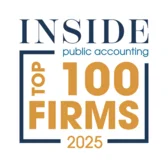The Paycheck Protection Program Flexibility Act (PPPFA) was signed into law on June 5, 2020, by President Trump. The PPPFA amends the CARES Act and may provide a Paycheck Protection Program (PPP) borrower greater flexibility and benefits. On June 8, 2020, Treasury Secretary Mnuchin and SBA Administrator Jovita Carranza, released a joint statement to further clarify certain aspects of the PPPFA. Additionally, they jointly stated that Treasury, along with the Small Business Administration (SBA), will release additional guidance and rules, a new borrower application, and a modified loan forgiveness application. Key provisions of the PPPFA, as of this date, include the following:
| PPP Covered Period | The covered period is extended from June 30, 2020, to December 31, 2020. This extension will allow PPP borrowers additional flexibility to spend PPP loan proceeds on eligible expenses through December 31, 2020. Additionally, June 30, 2020, is the last day that a PPP loan can be approved by the SBA. |
| PPP Forgiveness Period | The forgiveness period is extended from an 8-week period from the date of loan disbursement to the earlier of a 24-week period from the date of loan disbursement, but no later than December 31, 2020. The period begins on the date the PPP borrower received funds or on the “Alternative Payroll Covered Period” for borrowers with bi-weekly or more frequent payroll. Borrowers that have received a PPP loan before June 5, 2020, may elect either the 8-week or 24-week period. Borrowers that have received or will receive PPP loan proceeds on or after June 5, 2020, will be subject to a forgiveness period of 24 weeks (however the forgiveness period shall not extend beyond December 31, 2020. |
| Payroll Costs/Nonpayroll Cost Requirement 75%/25% | The April 3, 2020, Interim Final Rule stated that loan forgiveness was based on 75% of loan proceeds were used for payroll costs and no more than 25% for nonpayroll costs. The PPPFA amends this to state that at least 60% of the loan proceeds must be used for payroll costs. The joint statement issued by the SBA and Treasury on June 8, specifically states: “If a borrower uses less than 60 percent of the loan amount for payroll costs during the forgiveness covered period, the borrower will continue to be eligible for partial loan forgiveness, subject to at least 60 percent of the loan forgiveness amount having been used for payroll costs.” Example: Loan Amount: $150,000 Payroll Amount: $80,000 Nonpayroll: $70,000 Maximum Forgiveness Amount= $80,000/.60=$133,333 $133,333-$80,000=$53,333 available for nonpayroll costs $70,000-$53,333=$16,667 LOAN BALANCE-AMOUNT NOT FORGIVEN |
| PPP Loan Maturity Date | The maturity date of a PPP loan is extended to five years for new borrowers. PPP borrowers that obtained a loan before the enactment of the PPPFA may, but are not required to, modify existing loan terms with its lender. Such modification must be mutually agreed to between bank and borrower. |
| Deferment Period | The deferment of interest, principal, and fees is deferred from six months to the date the PPP borrower submitted its request for forgiveness to its lender or ten months after the end of the borrower’s loan forgiveness covered period. |
| Safe Harbor Period For Loan Forgiveness Extended | PPPFA extended the time in that PPP borrowers could restore FTE or wage/salary reductions from June 30, 2020, to December 30, 2020. |
| New Exemptions to Loan Forgiveness Reductions | PPPFA added several exemptions to loan forgiveness reductions that are beneficial to PPP borrowers: 1) Inability to rehire employees that we employed on February 15, 2020; 2) Unable to find “similarly qualified” employees on or before 12/31/2020; 3) Due to restrictions imposed by federal agencies as a result of COVID-19, employees cannot return to work (social distancing requirements, other safety measures). |
| Deadline to Seek Loan Forgiveness | PPP borrowers must submit Application for Forgiveness no later than ten months after the loan forgiveness period. Failure to submit the Application for Forgiveness will require the PPP borrower to begin making payments on the loan. |
| Payroll Tax Deferment | PPP borrowers that obtained loan forgiveness can now defer employer payroll taxes. |
The PPPFA does provide borrowers additional flexibility. However, we encourage borrowers to carefully examine the impact of the extension of the covered period. As a borrower whose PPP loan was funded before June 5, 2020, may elect the 8-week or 24-week forgiveness period. For this category of borrowers, it is important to evaluate each option to determine which may be more favorable in terms of the loan amount that will be forgiven. Again, it is anticipated that additional guidance will be released, and we recommend you continue to monitor the Treasury’s site at https://home.treasury.gov/policy-issues/cares/assistance-for-small-businesses. The Application for Forgiveness will be modified to incorporate the changes. Please check the site above for updates. If you have questions about PPP loans, please contact your HCVT professional.

